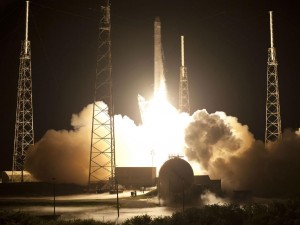SpaceX made one giant leap for commercial space travel on May 31 when their Dragon capsule returned to Earth after a momentous trip to the international space station. The trip was the first commercial space launch ever and the company has been commissioned by NASA to fly 12 similar missions for $1.6 billion.
So far, NASA has invested $300 million to help SpaceX develop the Dragon and the privately held firm has invested a similar amount of its own capital.
The terms of the SpaceX deal that the company has negotiated with NASA includes a provision that could pay an addition $1.5 billion for the 12 resupply missions to the International Space Station.
From a business standpoint, the commission makes sense for NASA. SpaceX mission cost is rumored to be about half of what NASA was spending on each Space Shuttle launch.
According to a study looking into the costs of the Falcon 9 rocket that launched the Dragon, a privately held contractor would save about $2.3 billion over what NASA would cost. SpaceX attributed the disparity to their own efficiencies in a few areas:
- Design, development, testing and evaluation costs are mostly a product of the workforce necessary to complete the task
- SpaceX keeps all operations in-house, while using subcontractors would cost about 3-5 times as much
- Simply more efficient infrastructure
Elon Musk, the company’s billionaire owner has gone so far as to say that SpaceX’ missions will cost about an eighth of what NASA missions have costed. This in line with the company’s philosophy, which is outlined on their web site:
“Our company is based on the philosophy that simplicity, low-cost, and reliability can go hand in hand. By eliminating the traditional layers of management, internally, and sub-contractors, externally, we reduce our costs while speeding decision making and delivery.”
This streamlined corporate structure has created an extremely efficient company and has helped make their NASA commission profitable. A break-even point calculation for SpaceX development of the Falcon 9, and thus, the entire set of missions would have been well below NASA’s. In the break even formula, this elimination of convoluted corporate structure would reduce the variable cost per mission (by eliminating subcontractor fees which include overhead costs, profits, etc) and therefore lower the number of missions SpaceX has to fly in order to recoup their costs.
SpaceX is a huge company that has been bankrolled by its billionaire owner, so they are a special case, but small business owners should take note that thinking outside of the box in terms of management and corporate structure can have very positive effects. By eliminating the use of sub-contractors, SpaceX has been able to gain efficiencies that give it a clear upper hand over its competitors.

